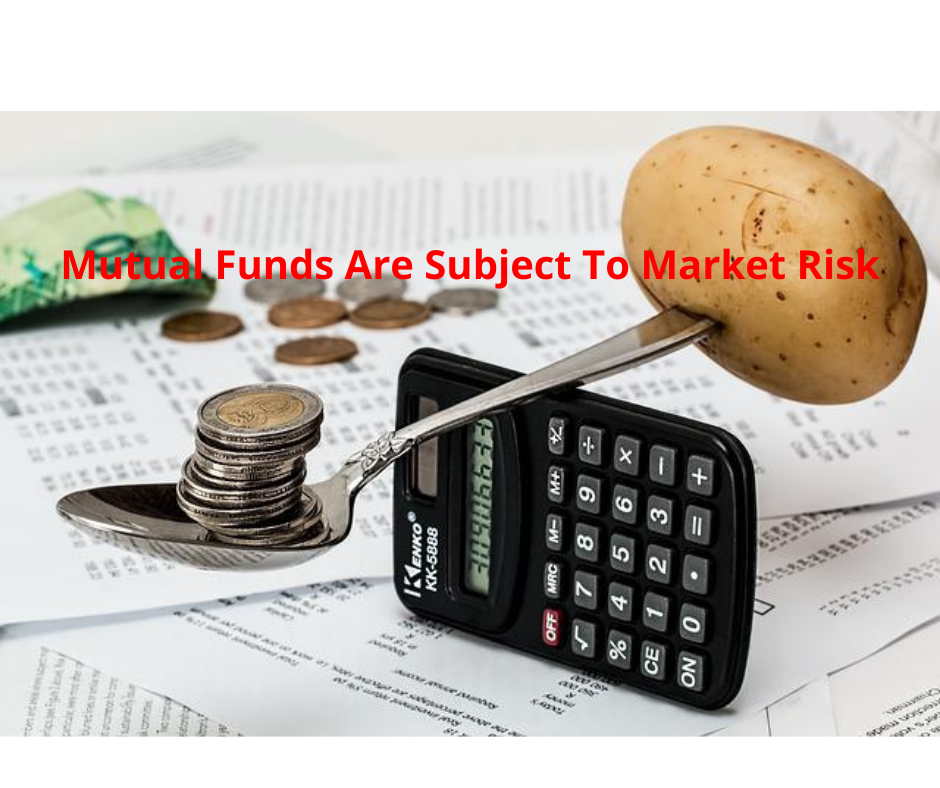Mutual funds are subject to market risk, just like any other investment. This is because no one can foresee what will happen in the future or whether a particular asset will appreciate or depreciate. No investment is risk-free because mutual funds are subject to market risk, which can’t be forecast or entirely controlled.
What is a risk?
Risk is defined as an unexpected result. For example, you might buy stocks, gold, or real estate, hoping that prices will rise after you buy, allowing you to profit when you sell. But what if the price drops after you purchase it? Risk occurs when the price of a stock, gold or real estate moves in the opposite way (down) than projected (up). To understand what “mutual funds are subject to market risk” means and what it means.
Also Read: Which Bank Is Best For Demat Account
What Causes Mutual Fund Investments Are Subject to Market Risk?
Because mutual funds are subject to market risk and invest in various financial assets, such as shares, debt, corporate bonds, government securities, and so on, they are vulnerable to market risk. In addition, the price of these instruments fluctuates according to various factors, potentially leading to losses. As a result, determining your risk profile and investing in the right fund is crucial.
How can you know if mutual funds are subject to market risk?
Mutual fund investment are subject to market risk indicators that can be used to evaluate stock, bond, and mutual fund portfolios. The variables are the Sharpe ratio, alpha, beta, r-squared, standard deviation, and alpha. These statistical variables are essential components of current portfolio theory and have historically predicted investment risk and volatility (MPT).
- Alpha: Alpha is a risk-adjusted performance statistic. It compares the risk-adjusted performance of a share or fund portfolio to the volatility of a benchmark index (price risk). An investment’s alpha is its excess return over the return of a benchmark index.
- Beta: Beta is a measure of a security’s or a portfolio’s volatility, or systematic risk, compared to the market as a whole. Beta, calculated via regression analysis, represents an investment’s tendency to respond to market changes.
- R-Squared: On a scale of one to one hundred, the R-Squared evaluates a fund’s correlation to its benchmark. If the R-Squared is 100, the Mutual Funds’ performance perfectly correlates with the standard.
- Standard Deviation: The standard deviation is used in finance to determine the volatility of an investment’s annual rate of return (risk). A volatile stock has a significant standard deviation. The standard deviation of mutual funds are subject to market risk-return indicates how far it deviates from expected returns based on prior performance.
- Sharpe Ratio: A risk-adjusted performance metric is the Sharpe ratio. It’s calculated by subtracting the risk-free rate of return (US Treasury Bond) from the rate of return on investment and dividing the result by the standard deviation of return.
Additional Mutual Fund Risks and Appropriate Solutions
This section explains some of the other frequent types of hazards and how to mitigate them while investing in mutual funds.
| Risks | Appropriate Solution |
| Volatility Risk | A varied portfolio of low- to moderate-risk funds can help to reduce market volatility. |
| Credit Risk | Invest in securities with a high credit rating and a track record of paying out large amounts of interest on time. |
| Liquidity Risk | It could be good to diversify your portfolio by including funds with moderate to high liquidity, such as liquidity funds. |
| Concentrated Risk | Rather than investing in a single asset class or sector, investors can spread their money across several. |
| Inflation Risk | Equity mutual funds, which have better risk-adjusted returns, can help combat inflationary effects. |
How to Manage Investment Risks in Mutual Funds
You now understand how mutual fund investment are subject to market and company-specific risks affecting you as an investor. To mitigate these dangers, take the following steps:
- Asset distribution: Based on your age, risk profile, and other factors, you should create an asset allocation strategy for your assets. Your portfolio will be well-balanced if you invest in shares, debt, real estate, commodities, and other asset classes. As a result, if one asset class underperforms, the other may outperform, thus preserving your portfolio.
- Diversification: Once you’ve decided on your asset allocation, diversify your investments within each asset class. Diversification guards against concentration risk. When investing in shares, diversify your portfolio so that even if some companies perform poorly, your portfolio is well secured and continues to produce returns. This diversification benefit comes standard with equity mutual funds.
- Long-term financial investments: Boom and bust economic cycles play out over time, and the next phase of economic expansion is better than the previous one. The mutual funds are subject to market risks that will even out, and you will achieve significant returns if you make regular investments through a structured investment plan (SIP) over time.
Also Read: PNB PPF Interest Rate
About Mutual fund investment Are subject to Market risks
Mutual fund schemes invest in various asset classes, such as equities, debt, or both, based on their objectives. Mutual funds are subject to market risks because of these asset groups. Because your money is invested in different asset classes and susceptible to various market risks, your “mutual fund investment is subject to market risk.” The plan offer document contains information on the mutual fund scheme’s risks. “Read all scheme-related documentation carefully,” it says. The Statement of Additional Information (SAI), Scheme Information Document (SID), and other scheme documents contain specifics about these risks.
FAQs on Mutual Funds:
Q. Can you lose money in mutual funds?
Ans. If you’re worried about mutual funds losing money, consider that some mutual fund categories are more volatile than others. This means that, while they may offer great rewards, they also pose a greater risk.
Q. What is a high-risk mutual fund?
Ans. High-risk mutual funds have a lot of upside potential and can make you a lot of money. These funds, on the other hand, are highly volatile and risky. Nevertheless, investors can expect hefty dividends from these high-risk mutual funds.
Q. What makes a mutual fund low-risk?
Ans. As the name implies, little-risk mutual funds are low-risk investments with a predictable return. The most frequent investments are real estate, government bonds, and other assets… They achieve this by investing many of their total assets in debt instruments.
Q. Investing in mutual funds is it risky?
Ans. Don’t worry about mutual funds being a risky investment because they are exposed to market risk. They’re completely safe. No one can steal your money because mutual funds are supervised and managed by the SEBI and the AMFI (Association of Mutual Funds in India).
Q. Is it correct that mutual funds are subject to market risk than stocks?
Ans. Mutual funds are safer than individual stocks because they are diversified. Therefore, risk-averse investors should diversify their investments. But, on the other side, limiting your risk may limit your investment’s profits.
Also Read: What Is a Good Credit Score in India
Best Washing Machine Brands in India
Best Refrigerator Brand In India
Hello there, my name is Phulutu, and I am the Head Content Developer at Nivesh Karlo. I have 13 years of experience working in fintech companies. I have worked as a freelance writer. I love writing about personal finance, investments, mutual funds, and stocks. All the articles I write are based on thorough research and analysis. However, it is highly recommended to note that neither Nivesh Karlo nor I recommend any investment without proper research, and to read all the documents carefully.






Leave a Reply